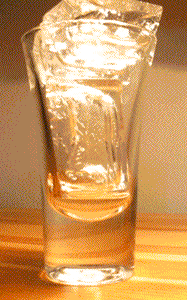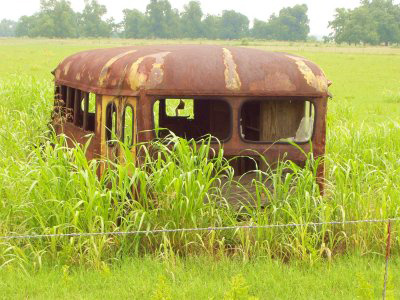Changes to Matter
In the Matter and Energy Unit of this course, you learned that matter can change from one state to another and that changes to matter can be either physical or chemical. Review the information below.
- Physical changes to matter involve changes in the physical properties of matter only. No new chemical substances result from a physical change. Examples of physical changes include melting, freezing, cutting, mixing, and dissolving. The ice in this glass, for example, undergoes a physical change as it melts—it is still water, just in a different physical state.
- Chemical changes are those that do result in new chemical substances. During a chemical change, one or more substances called reactants combine or break down to form new substances called products. Examples include burning, digestion of food, and oxidation (e.g., rusting of an old metal car).


In burning, a substance—perhaps coal—is combusted in the presence of oxygen. Some of the carbon atoms from the coal combine with some of the oxygen atoms in the air to form carbon dioxide gas, which is the product of a chemical change. In digestion, the molecules in your food break down to simpler chemical substances, releasing energy as they do so. In oxidation, one substance is combined with oxygen to form a new substance usually called an oxide. For example, iron may combine with oxygen to form iron oxide.